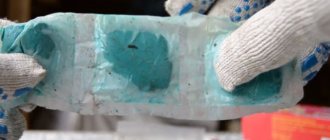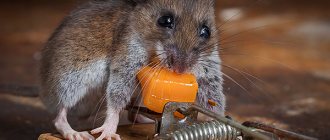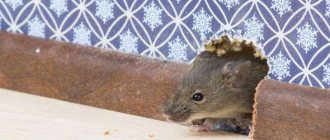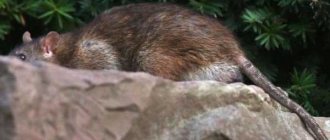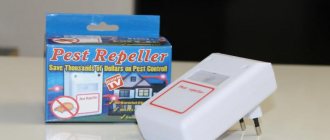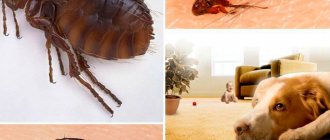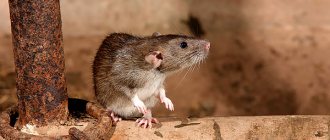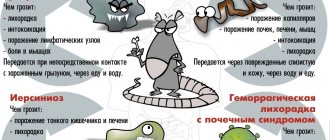Author: Michael Potter Updated: April 17, 2020
There are two types of rat baits: food (non-toxic) - for luring rats into a trap, and poisonous - for killing rodents. Food baits can be used for all types of rat traps, and poisons are most often used in conjunction with special stations for safety reasons. In this review we will talk about the 8 best poisons for rats and mice.
After ingesting poison, rodents die within a few hours to several weeks. Mice are smaller than rats and can die within a day, but rats die more slowly (a week or two). Poison baits are toxic and can kill any animal, including pets (cats and dogs), squirrels, raccoons and other wild animals. Be careful when using them around your pets and small children. Otherwise, instead of using poisons, you are better off purchasing an ultrasonic pest repeller to safely eliminate the animals that are bothering you.
Plastic container for mice
In order for poisoned baits to have maximum effect, special plastic bait containers should be used. They are used by pest control agents.
Their advantages:
- the poisonous bait is protected from atmospheric influences (wind, rain);
- equipped with a drinking bowl and a special place for poison;
- To attract the attention of rodents, the entrance resembles a hole.
Poison reserves can be easily and conveniently replenished; this is exactly what the design is designed for.
Rules of use, precautions
When living in a city apartment building, an effective method for exterminating rats is to simultaneously treat all apartments by specialists. It's reliable, convenient, safe.
If the need arises for an independent war against dangerous pests, then certain measures must be taken:
- Ensure that there are no people or animals in the room to be treated. When using liquid forms of drugs, you cannot enter the room for several days. After which it must be well ventilated.
- Use gloves and protective suit. The smell of a person, easily detected by a rodent, can scare it away. He won't eat the bait.
- Follow the dosage requirements specified in the instructions. Do not use drugs that have expired and are stored in unsealed packaging.
- Place all food items in safe places.
- Place poisons on a plastic plate, film, newspaper, along the path of maximum movement of animals, in places where food is located.
- Destroy corpses in a timely manner , keeping pets away from them.
- The number of bait sites used is determined by the size of the rat population that appears. If there is excess bait, it is burned and buried to a depth of at least 60 cm.
- If poison enters the human body , immediately call an ambulance.
Bromadiolone
Poison of the anticoagulant group. Once in the stomach of a rodent, it disrupts the synthesis of proteins of the prothrombin complex. Supplied as a liquid concentrate (0.25%) in 1.1 liter containers. In addition to the food base, attractants are recommended: unrefined sunflower oil, sugar. Any operations (cooking, laying out) are performed in special clothing and gloves.
Mass pest control products are toxic and 100% effective only when used correctly, so only certified specialists can use them. In this case, they are safe and the goal will be achieved.
Poison Ingredients: How Do Rodenticides Really Work?
Rodenticides are toxic to rodents, but, unfortunately, to humans too. All these baits bring death. Therefore, rat poisons are best used in conjunction with stations (like the Protecta LP Rat Bait Station for ~$18.49).
The active ingredients in rodenticides, which are classified as anticoagulants (such as warfarin, diphasinone, and bromadiolone), interfere with blood clotting, causing severe internal bleeding and ultimately death.
Products containing active substances other than anticoagulants are toxic in various ways. They can affect the nervous system (for example, bromethalin). They increase calcium levels in the blood, leading to kidney, liver or heart failure (eg cholecalciferol).
All poisons also belong to two different generations.
First generation poisons kill rodents slowly because they have a cumulative effect. For rodents to die, they need to eat the poison for several days, rather than just taste it once. Most rat and mouse baits these days fall into this group.
Second generation poisons (for example, containing bromadiolone, brodifacoum) can kill pests after just a single dose of the poison.
Poisons come in both block, granule and bar form (individually wrapped to help maintain the freshness and smell of the bait), etc.
- Using poison bait is usually less expensive than trapping because it is less labor intensive and rats do not have to be checked every day. Thus, in large rooms it is more profitable to use poisons.
- You should be aware that mice and rats can learn to identify baits and avoid them. To prevent this, scientists advise first laying out food bait to lull the vigilance of rodents, and then replacing it with a poisoned one.
- Liquid rat poison works great in dry areas.
Poisons and animals (cats, dogs)
Please note: There are no rat poisons that are safe for your pets! All poisonous baits are created to kill animals and can also harm cats and dogs. Be very careful: if the poison is swallowed, severe poisoning can occur. If you are concerned about pets, try an alternative method: electronic repellers. To get rid of rats, use only powerful repellers with a large area coverage.
User Cesar Rueda of the site warns: “Please be very careful when using bait if you have a dog. She won't be able to get into the bait station, but many rodents have a tendency to pull out and hide bits of poison all over the backyard..."
To prevent your cats or dogs from accidentally eating poison in the yard, you can, for example, attach poison to a strong wire on the fence or hide pieces of the toxic product in places where your pets do not go - and then wait for the dead rats.
“Just use the poison in garages and attics – ie. in areas where your children and pets would not normally go. It is possible that dying rats or mice will go outside and be eaten by other animals (though if you live in an urban area the likelihood is low compared to rural areas), but usually most die near the area where you used the product. After the death of a rodent, an unpleasant odor will certainly appear, which is why the poison must be used with caution in places where it will then be difficult to find the corpse and remove it.”
Yes, poisons kill rodents. But you don't know where exactly they will die. Dying rodents are looking for a quiet place, and you will be lucky if they manage to get outside. But it is possible that their death will happen right in your house or barn, then an unpleasant surprise awaits you - the smell of dead rats.
Lures
These are the next most popular effective anti-rat treatments. They are treats containing strong poison inside. As soon as the rodent treats itself to what people offer it, it dies. In this case, the bait should be colored quite brightly. This is necessary not to attract a rodent, but to always remember where exactly this product is located.
However, it is immediately worth mentioning several disadvantages of such drugs. First of all, they are made in very bright colors and bizarre shapes. This may arouse the interest of a child, who will think that these are sweet candies. Therefore, if there are children in the house, then you should not use such products.
Poisons that are used in baits, as a rule, are toxic, so if you eat it, very severe poisoning can occur. There are also baits on sale that look like tablets, granules or grains. They need to be scattered along rodent paths, also along walls, under baseboards, and so on. In addition, you need to take into account that baits of this type are prohibited from being used in residential apartments. They are intended exclusively for houses and other larger premises. Let's look at the most popular tools of this type.
An effective means of baiting rats over a large area
The main means of fighting over large areas are:
- bait houses. Food containing poison is placed in them. They place houses in places where there are large concentrations of rodents. When a rodent comes inside, the house closes;
- treatment of burrows with rodenticides (poisons in powder form). Particles of the product fall on the fur, and then when licked inside the animal;
- filling holes Rats can chew through most materials, even concrete. Therefore, it is better to cover the holes with metal sheets or a wall made of cement, shells and crushed glass;
- traps and traps. Most often they have a wooden base. It is difficult to catch a rodent with such devices; they can only be used in secluded places once, since rats leave their odors, warning their relatives of danger;
- carbonation. A poisonous gas based on hydrogen phosphide or carbon monoxide is sprayed into a closed room. This mixture does not harm food products and disappears quickly, leaving no odor.
Small size is deceptive as the rat can be fast and agile
The most harmless ways
If we talk about methods of getting rid of rodents, then the simplest and most effective remedy for rats, of course, is to get cats. In this case, there are 2 options for the development of events. Either your four-legged friend will constantly destroy rodents, or they will smell his scent long before that and will stop visiting the house. However, even this method only helps if there are not such a large number of rodents.
Some believe that an effective remedy for rats are special traps with bait placed around the entire perimeter of the house. This method, of course, helps solve the problem, but if there are other animals or small children in the house, then there is a high risk of injury. Rat traps and other traps may also be of interest to a restless child or pet. In such situations, it is better to avoid mechanical methods of destroying or catching rodents.
There is also a chemical method for getting rid of such neighbors. To do this, just buy a rather aggressive poison in the store and scatter it in the corners. This method has both advantages and disadvantages. Let's take a closer look at this method.
Reviews about the drugs
- One morning I saw a large rat sitting on a trash can in the kitchen. She was not very willing to run away from my movements. Living on the second floor of a nine-story building, I immediately went for a means of dealing with a dangerous, unpleasant animal. The first product I came across was “Tsunami”. Having laid out the pink tablets in accordance with the instructions, near the water pipes in the kitchen, I noticed their disappearance the next day. The rat did not appear again. The place is difficult to reach. I take the pills often. Marina .
- Infestations of rats and mice in the country are common. Especially at the beginning of autumn. I spread rat poison on the veranda and kitchen. Everything was eaten. I didn’t find any corpses, but the rats didn’t appear again. In the spring there were no signs of rats. Valentina.
- In late autumn I used Zookoumarin powder. I forgot a bucket of water on the veranda. Arriving at the dacha two weeks later, I was horrified to find a full bucket of swollen corpses. I had to bury it urgently. Perhaps this is one of the particularly effective methods of struggle. I didn’t see any more rats in the dacha. Only small autumn mice. Lyudmila.
How to prepare poison for mice at home that is safe for other animals
You can make poison for uninvited guests yourself, using improvised means . These baits will be completely safe for humans and pets.
Their action is not as fast as that of chemical drugs, so you can completely get rid of mice in several procedures.
Recipes for preparing poison.
- Mix buckwheat with alabaster in a ratio of 1:3. Place a container of water next to the bait. After a meal, the rodent will want to drink, which will lead to swelling of the alabaster inside.
- Combine sugar with quicklime in a 1:2 ratio. Rodents will not ignore the sweet powder, and when lime reacts with moisture, gases will begin to be released, the temperature will rise and the stomach will swell. This will lead to inevitable death.
- Mix gypsum with corn flour in equal quantities. Add a little warm milk to the mixture to form a stiff dough. Roll the resulting mass into balls and place them in rodent habitats. The plaster in the stomach will harden and clog the rodent's intestines.
Be sure to read:
How to deal with mice in an apartment, what to do: effective methods and means

